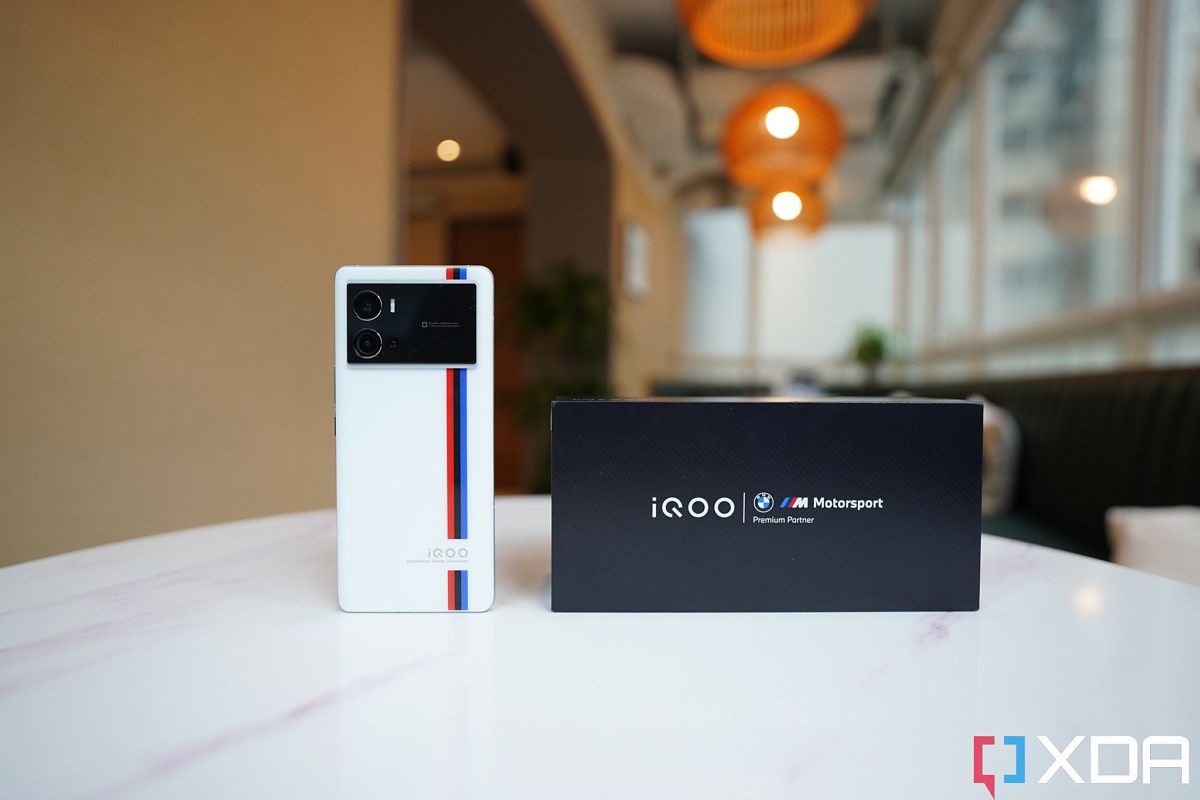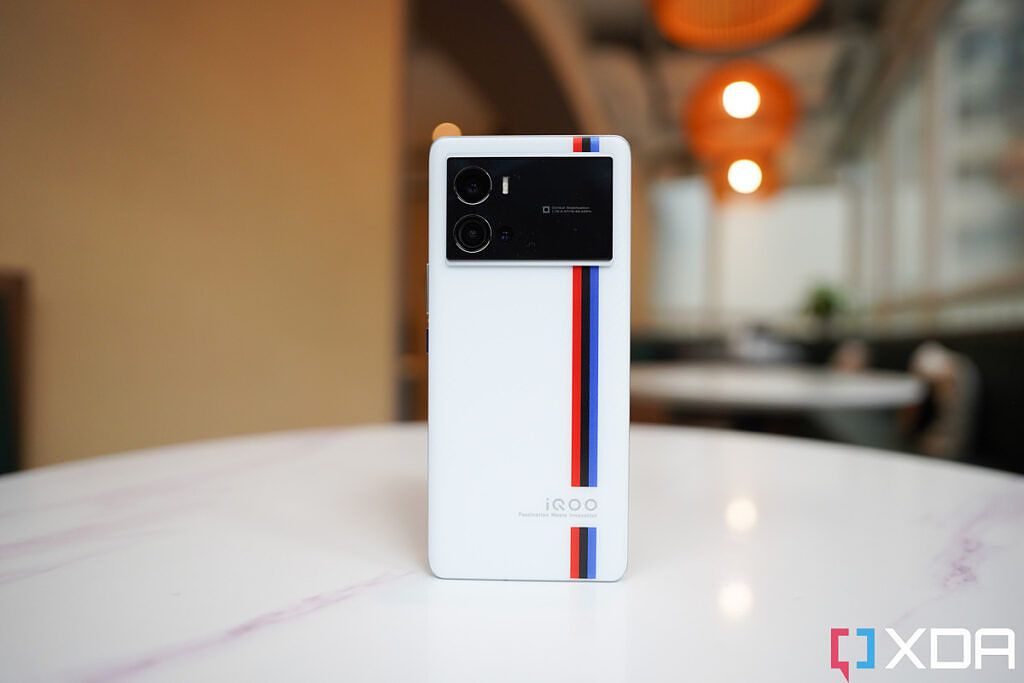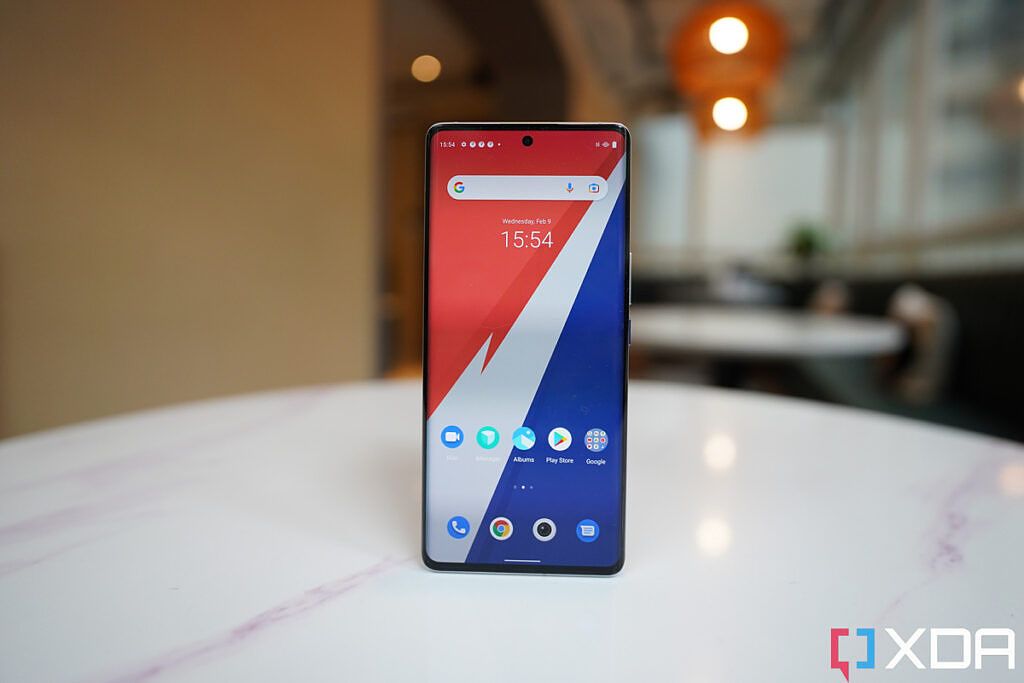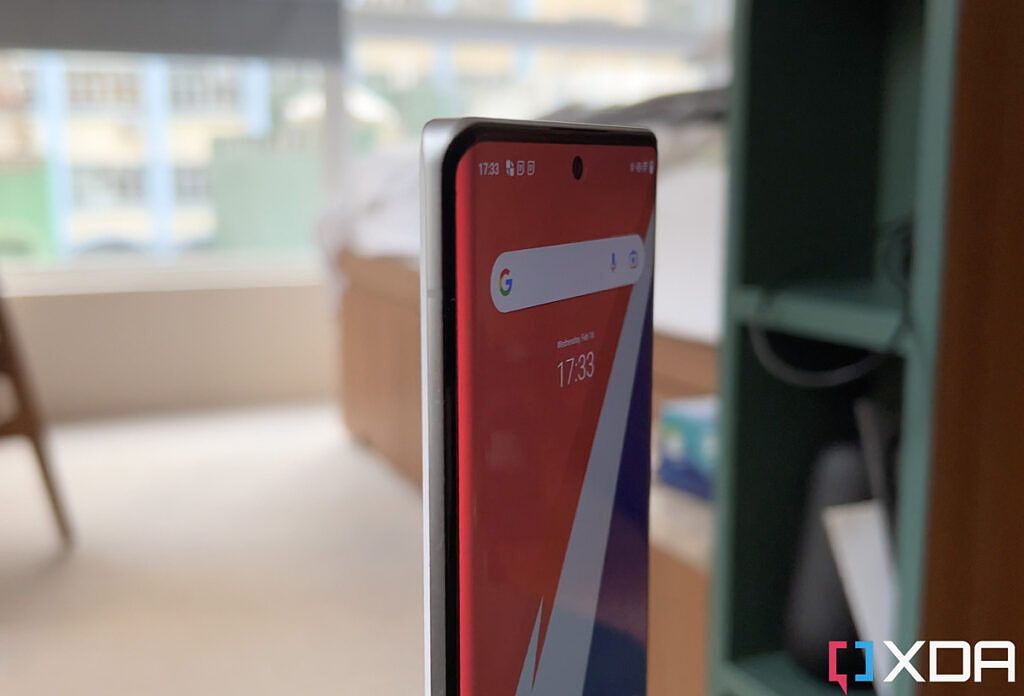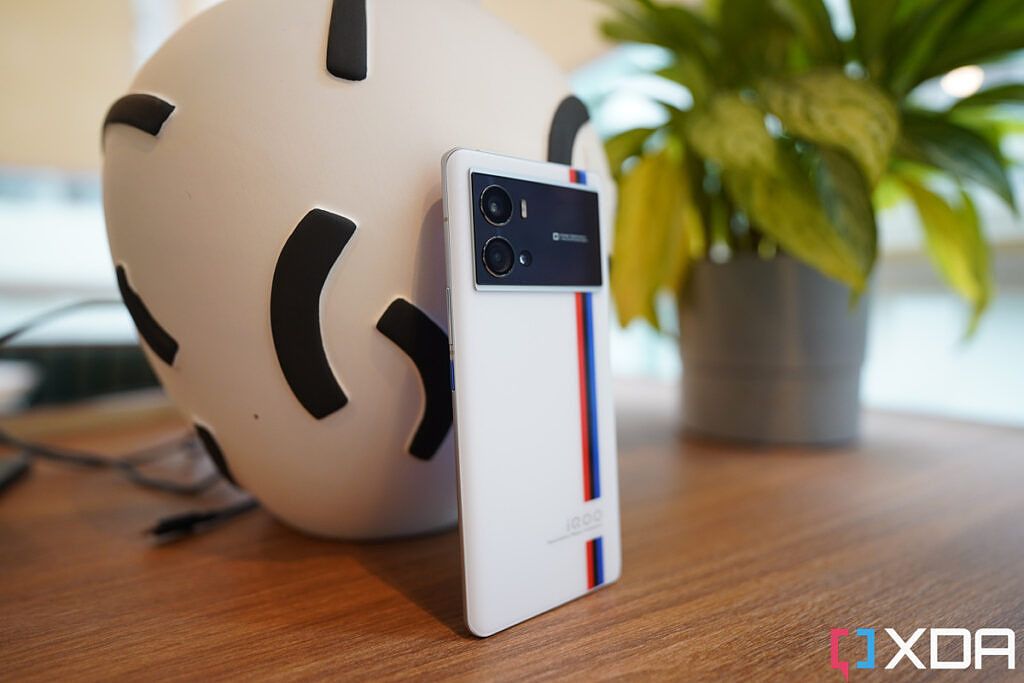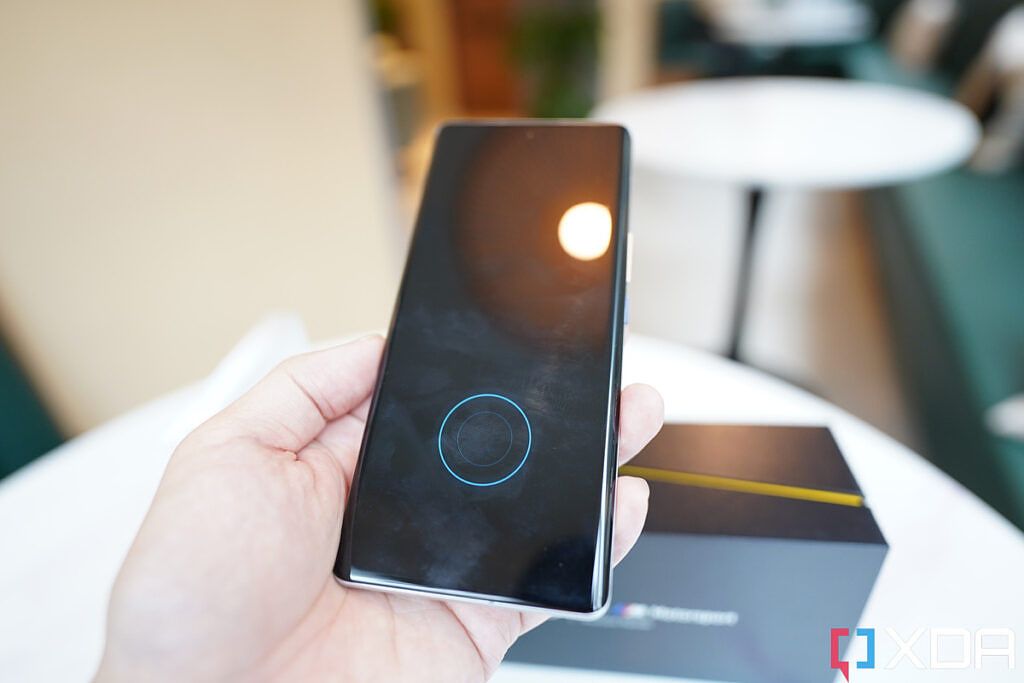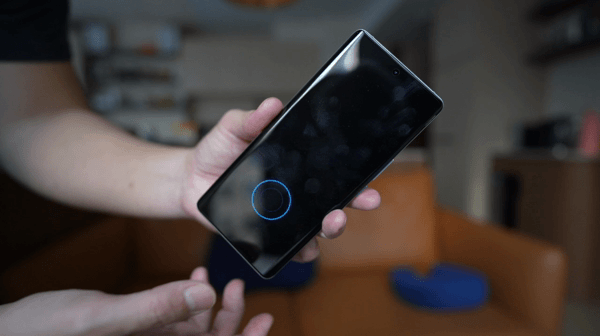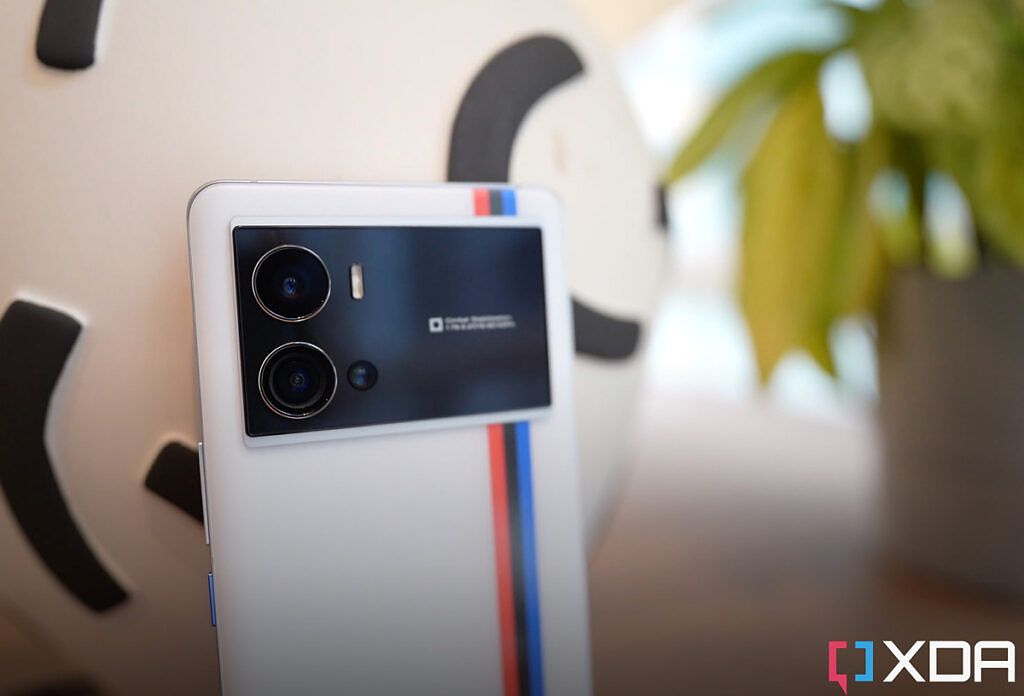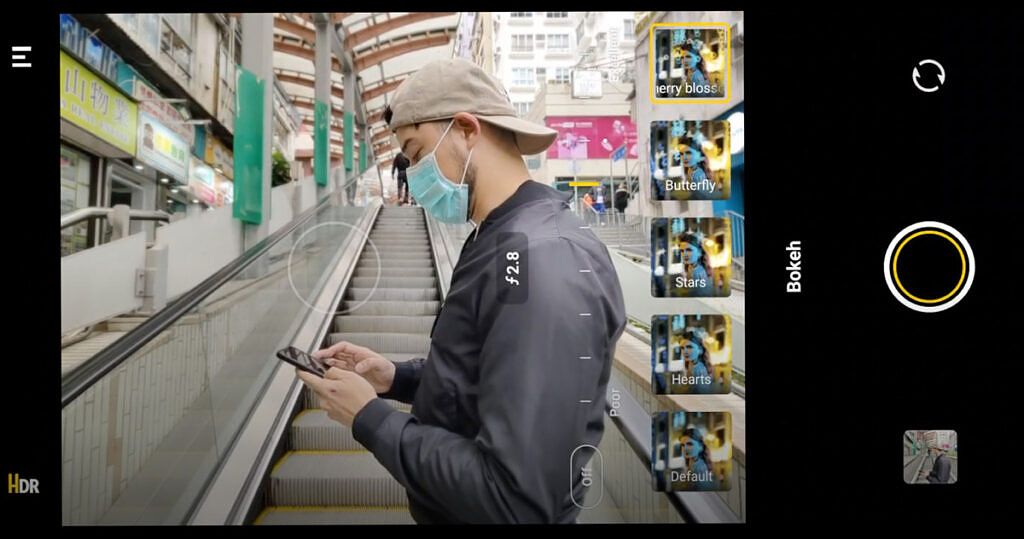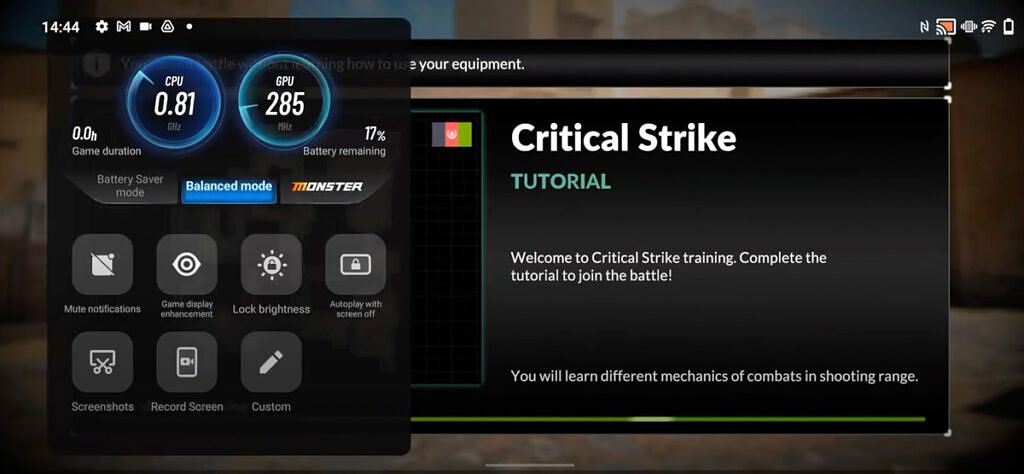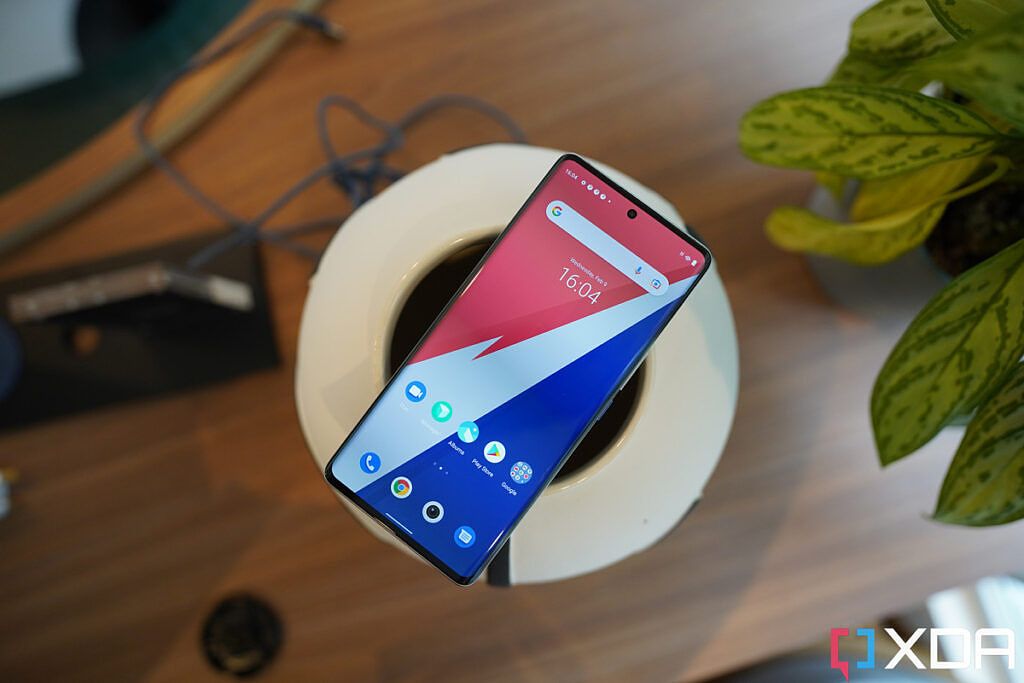Chinese sub-brands pump out a lot of phones. And while they may offer great value, they are almost certainly inferior to the parent brand's devices around the same release cycle. No matter how much Redmi or Realme's marketing flex their specs, we know there's almost no chance the phones are actually better than a recent Xiaomi or OPPO device. The word sub is, after all, short for subsidiary, which literally means "of less importance."
iQOO 9 Pro may be the first sub-brand release to come close to outshining its parent brand flagship. Launching in India today after a release in mainland China last month, the iQOO 9 Pro is one of the first phones anywhere to use Samsung's GN5 image sensor, and one of the first internationally released device to use Qualcomm's 3D Sonic Max fingerprint scanner -- neither of these components can be found in any Vivo device yet. And iQOO 9 Pro even managed to do what Vivo's excellent X70 Pro Plus couldn't do: fit its main camera into Vivo's proprietary gimbal system. The result? Some of the best video stabilization I've ever tested. In fact, the only thing missing here is a great zoom lens, otherwise, every spec, every component here is tip-top, premium flagship territory.
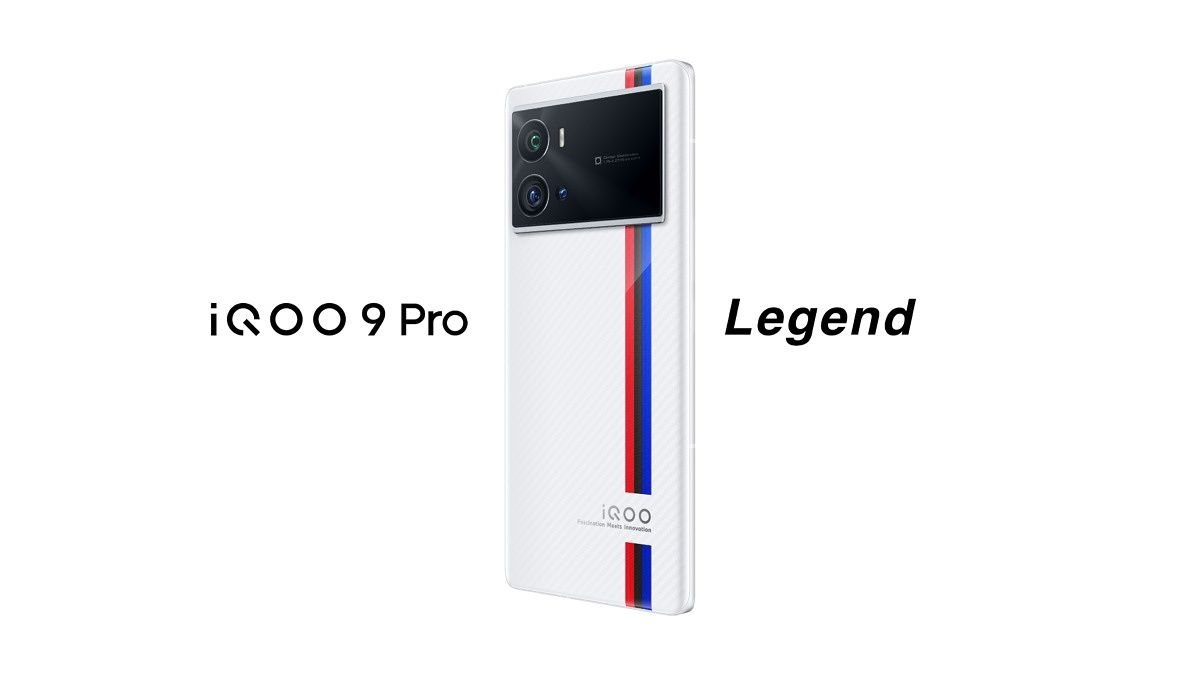
iQOO 9 Pro
The iQOO 9 Pro brings almost tip top components in many areas at a lower price tag
iQOO 9 series: Price and Availability
The iQOO 9 series will go on sale in India starting March 2nd, with pre-orders beginning February 23rd. The prices are:
- iQOO Pro:
- ₹64,990 for 8GB RAM + 128GB storage
- ₹69,990 for 12GB RAM + 256GB storage
- iQOO 9:
- ₹42,990 for the 8GB RAM + 128GB model
- ₹46,990 for the 12GB RAM + 256GB storage
There are a bunch of launch offers related to specific banks, which will further bring the pricing down.
iQOO 9 and iQOO 9 Pro: Specifications
|
Specification |
iQOO 9 |
iQOO 9 Pro |
|---|---|---|
|
Build |
|
|
|
Dimensions & Weight |
|
|
|
Display |
|
|
|
SoC |
|
|
|
RAM & Storage |
|
|
|
Battery & Charging |
|
|
|
Security |
In-display fingerprint scanner |
In-display fingerprint scanner |
|
Rear Camera(s) |
|
|
|
Front Camera(s) |
16MP. f/2.5 |
16MP. f/2.5 |
|
Port(s) |
USB-C |
USB-C |
|
Audio |
Stereo speakers |
Stereo speakers |
|
Connectivity |
|
|
|
Software |
|
|
|
Colors |
Black, Orange, White with BMW stripes |
Orange, White with BMW stripes |
About this hands-on: Vivo provided a review unit of the iQOO 9 Pro BMW M edition. Vivo did not have any input in this review.
iQOO 9 Pro: Design and Hardware
The iQOO 9 Pro is yet another curvy Android glass slab phone, with a glass front and back that curve to meet an aluminum frame in the middle. The 6.78-inch OLED display is an LTPO 2.0 panel, meaning refresh rate can drop to as low as 1Hz and as high as 120Hz; it can display 10-bit color, get to a maximum brightness of 1500 nits, and has a resolution of 3200 x 1400 -- in other words, it's about as good as an OLED panel can get right now.
The curvature on the screen is more dramatic than in recent Samsung flagships or the Pixel 6 Pro, resulting in a narrower frame that feels a bit pointy in the palm. The aluminum chassis has a flat top and bottom -- the phone can stand upright on its own.
Flip the phone around and it'll look familiar to those who've seen the Vivo X70 Pro series -- there's a large camera island that spans almost the width of the phone despite the cameras being located on just the left side, leaving a right side that's entirely for decoration.
The glass plate appears to be just standard glass and not Gorilla Glass, and it features the tri-colored stripe that has been used in previous iQOO devices. The white part of the glass is matte and cool to the touch, while the striped part has a different texture that's more grippy and slightly raised.
Under the hood the iQOO 9 Pro packs a Snapdragon 8 Gen 1 with either 8 or 12GB of LPDDR5 RAM and 256GB of UFS 3.1 storage, along with a 4,700 mAh battery that can be topped up at 120W speeds -- the charging brick is in the box. From my testing, the iQOO 9 Pro charged from 0% to 100% in about 23 minutes. In another test, it charged from 15% to 63% in 10 minutes. So in effect, you'd need just a few minutes of charging to get going for a fair few hours, and probably even half a day.
The fastest ultrasonic fingerprint reader I've tested
In the smartphone space, there are two major suppliers of in-display fingerprint scanners pushing two different technology: Shenzhen-based Goodix and American silicon maker Qualcomm (there are other suppliers, like whoever made the mediocre scanner in the Pixel 6 series, but the majority of phones use either Goodix or Qualcomm). Goodix's technology uses an optical solution, which shines a light in between pixels to scan our digits. Qualcomm's version, as the name implies, uses soundwaves and works more like sonar.
Qualcomm's solution is supposedly more secure (because soundwaves can map a finger in 3D form while light cannot), but there was no denying that Goodix's scanners were faster and more likely to unlock on the first try. This remained true until last August when Qualcomm announced its 3D Sonic Max solution, which has a significantly larger scanning area than Qualcomm's previous 3D Sonic solution (without the Max).
For reasons not made public (perhaps cost?), not many phones have adopted Qualcomm's 3D Sonic Max solution -- not even the Galaxy S22 series, which uses Qualcomm's Sonic sensor (without the Max). Last year's iQOO 8 Pro became the first phone in the world to use this solution, and now the iQOO 9 Pro brings this solution to an international audience -- and it's awesome.
Registering my fingerprint took just half a second
When I first set up the iQOO 9 Pro, I was stunned to see that registering my fingerprint took half a second -- just one tap, and it was ready. I had been so accustomed to the fingerprint setup process which usually takes anywhere from 6-10 seconds, requiring up to a dozen taps, that I thought the iQOO 9 Pro must have made a mistake. But nope, once I made it through the setup to the homescreen, I tried to unlock the phone and my digit worked. This is the first scanner in which I don't have to hold my thumb in place for a beat -- even if I tap the screen and immediately pull away, it's enough to unlock.
Further, while most of us have become used to placing our thumbs at a very exact spot on the display of our phones, the iQOO 9 Pro has a bigger recognition area. In the gif above, the circle is representative of the size, although I have had success even when half my thumb was out of the circle, indicating that the recognition area is even larger. So not only do you get an insanely quick unlock, you need fewer attempts to get it right too, since you have a larger sensor area and no longer need to play darts with your thumb on the scanner. Touch and unlock. In fact, after using this, I find the Galaxy S22 Ultra's fingerprint scanner now slower and harder to find, so the iQOO 9 Pro certainly has me spoiled.
iQOO 9 Pro: Cameras
The iQOO 9 Pro packs a triple camera system, consisting of a 50MP main camera, 50MP ultra-wide, and a 16MP 2.5x telephoto lens. The main camera is the aforementioned Samsung GN5 sensor, which boasts a fast f/1.75 aperture and decently large 1/1.57-inch image sensor size. On top of this, this lens is built on Vivo's gimbal system. I've tested Vivo's gimbal system plenty, and while it's not as game-changing as the name would imply, it does help offset micro-jitters and z-axis shakes.
The iQOO 9 Pro has perhaps the best stabilization in any phone I've tested
In the Vivo X60 Pro Plus and X70 Pro Plus, the gimbal system was used to support the ultra-wide lens, because the 50MP GN1 sensor was too heavy to use the gimbal. Either the GN5 sensor is lighter or Vivo improved its gimbal payload because the iQOO 9 Pro's gimbal supports the main camera instead of the ultra-wide, which makes more sense, because the main camera is always superior, and the wider lens does not need as much stabilization.
The result? Perhaps the best stabilization in any phone I've tested. Don't take my word for it, look at the video samples below -- the first 20 seconds is of me walking up and down stairs while holding the iQOO 9 Pro with one hand; the rest of the clip contains night and day walking samples. All footage was shot with the main camera.
For still photos, the iQOO 9 Pro's main camera seems to be as good as the Vivo X70 Pro Plus' -- which is saying a lot, because I think the latter is still the reigning smartphone camera champion.
I included the Galaxy Z Fold 3 in this comparison to show the difference between excellent, tip-top cameras and a merely "good" camera. The Galaxy Z Fold 3's shot, once you examine, is inferior: notice the visible noise in the upper right corner of the image, the lights are slightly blown out, and if you zoom in to actual size, is a much softer image.
And that was a relatively easy shot. Move to a challenging scene -- in a dark room with some bright lights coming through from the monitor and moderate light from windows, and this is where iQOO 9 Pro and Vivo X70 Pro Plus' camera prowess shines.
So yes, the iQOO 9 Pro's main camera keeps up very well with the Vivo X70 Pro Plus. Here are more samples from the iQOO 9 Pro's main shooter.
The ultra-wide sensor here is a 50MP JN1 sensor, which seems to be the ultra-wide sensor du jour at the moment at BBK Electronics, as it's the same sensor used in the OnePlus 10 Pro and the Realme GT 2 Pro. This sensor is notable for having a really wide 150-degree field-of-view, so it's almost like a fisheye lens. While OnePlus hides the 150-degree option deeper in the camera app, iQOO's camera app offers that FoV directly in the camera app, along with a more traditional ultra-wide "0.6x" framing.
I'm not sure why the 150-degree FoV is needed, as fisheye distortion is so bad the photo look odd. I think, 99 times out of 100, I'd rather just shoot with the digitally cropped in 0.6x framing.
The zoom lens, at just 2.5x optical, is fine, but I would have preferred a Periscope zoom lens that can at least give me 5x optical.
The 2.5x zoom lens is an ideal focal length for portraits, however.
The 16MP selfie camera gets the job done, but as usual, there's a heavy layer of beauty filters. I wish my skin actually looked this smooth and blemish-free in real life.
iQOO 9 Pro: Software and Performance
iQOO 9 Pro runs FunTouch OS 12 over Android 12. Other than the camera app interface and an "Ultra Game Mode," the phone behaves like any other Vivo phone I've tested recently. FunTouchOS is much improved over years past and not a bad software skin at all -- animations here are particularly smooth -- but I still rank it below Samsung's One UI, Xiaomi's MIUI, and my personal favorite, OPPO's ColorOS. Reasons range from lack of polish (there's still the occasional Chinese text or oddly translated English phrases that pop up despite the fact this is an international ROM meant for release in India and Europe), and the software does not allow apps to be opened in floating window mode -- the only multi-tasking option is split-screen.
Ultra Game mode is a slide-over menu that's activated with a swipe from the sides during gaming. The menu offers controls like turning off notifications, grabbing screenshots, or pushing the iQOO 9 Pro into "Monster" mode which essentially turns off most background processes so the phone can dedicate all its resources to running the game.
Over my week of use, I encountered no issues with the device. The only area that leaves me wanting is battery life -- because I run the phone at its full resolution and I'm a heavy user, I find the battery can only barely squeak by a full 12-, 13-hour day for me. However, the 120W charging brick can top up the phone so fast it's a non-issue.
iQOO 9 Pro: Conclusion
The iQOO 9 Pro is the rare phone from a sub-brand to outshine devices from the parent brand
The iQOO 9 Pro's ₹64,990 price tag (which converts to $870) seems reasonable, considering this is a device with top-tier components almost everywhere except in the ultra-wide and zoom lenses. The main camera is among one of the best in the market, with some of the best video capabilities around too. While I think the Vivo X70 Pro Plus still has a better all-around camera system, the iQOO 9 Pro has a better in-display scanner, superior LTPO panel, larger battery, and faster charging too.

iQOO 9 Pro
The iQOO 9 Pro has the fastest fingerprint scanner and arguably best video stabilization in any Android device right now.

